Spurred by a graying workforce, Virginia Tech researchers are laying the groundwork for an accessible future of agriculture.
The week that would change Terrie Webb’s life is one she doesn’t remember.
In that week, the then-57-year-old orthodontist clinic admin from Prince George County, Virginia, was rushed from a doctor’s appointment about her swollen, purple hand straight into emergency surgery. Where her memory picks back up, she recalls being informed she’d suffered a blood clot that traveled to her shoulder. Despite the emergency surgery, she’d lost the full functionality of her right hand — and subsequently, her job.
After a year spent recovering, a friend encouraged Webb to turn her flower gardening hobby into a full-time job as a farmer. Webb was entering deeper into an occupation inextricably linked to physical capability. How would she tend to her snapdragons and lisianthus flowers without the full functionality of one of her hands?
The answer for Webb — and possibly for farmers across the U.S. — was found in an engineering lab.
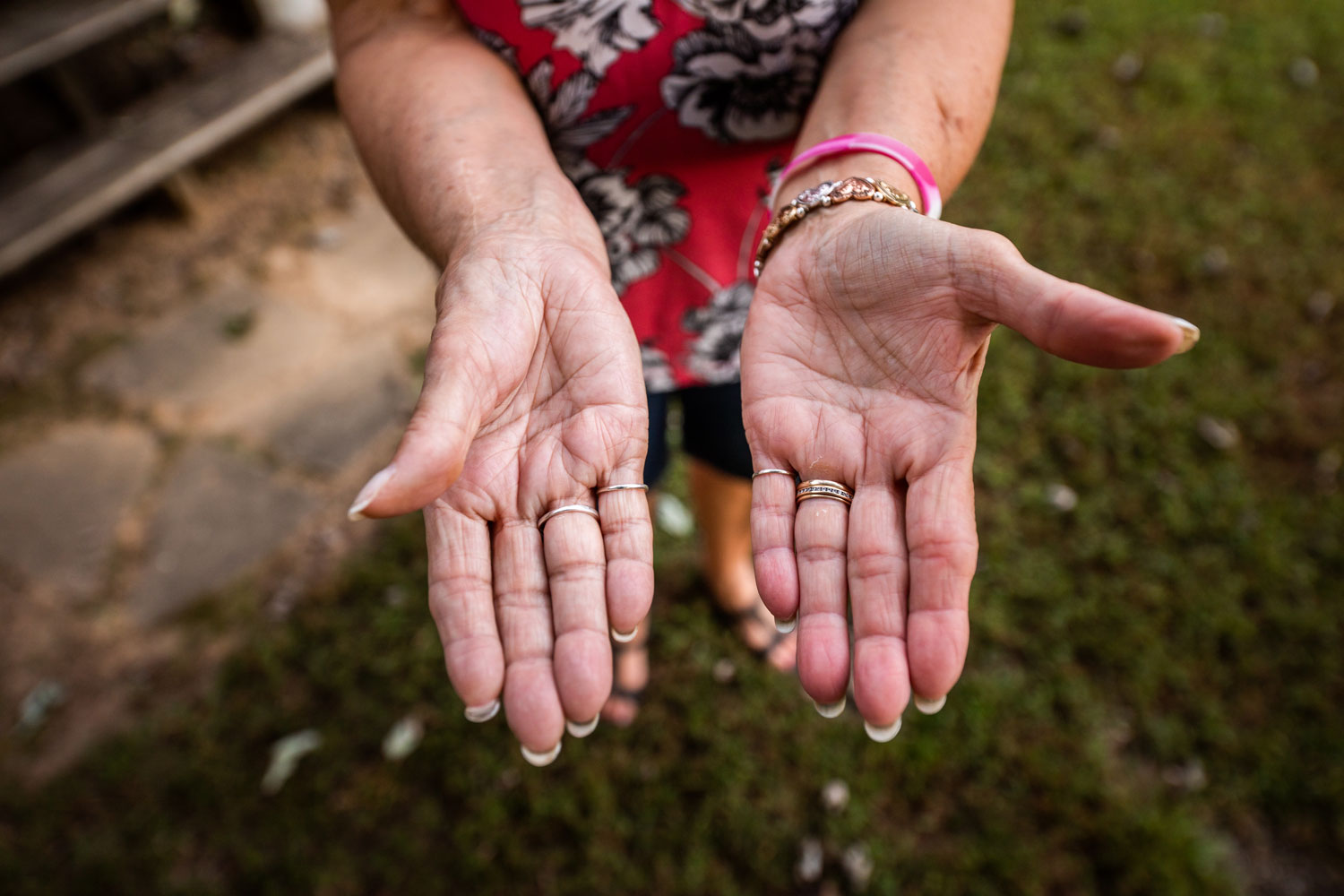
A graying, staying workforce
Throughout the U.S., an aging demographic of small to midsize farm owners and workers is responsible for a large portion of the nation’s agricultural backbone.
Large scale farms — classified as having an income of $1 million or more — output the majority of food production in the U.S. But United States Department of Agriculture data reveals that small and midsize family farms make up 96 percent of farms in the U.S. They supplement production, largely of poultry and hay, and provide broader access to food. Without them, there are no farmers markets or grocery store shelves stocked with locally-sourced produce.
“The interesting nuance is if everybody was a large farmer, it just becomes a commodity,” said Robert Grisso, professor and interim department head of Virginia Tech’s Department of Biological Systems Engineering. “All of a sudden, you lose the local flavor.”
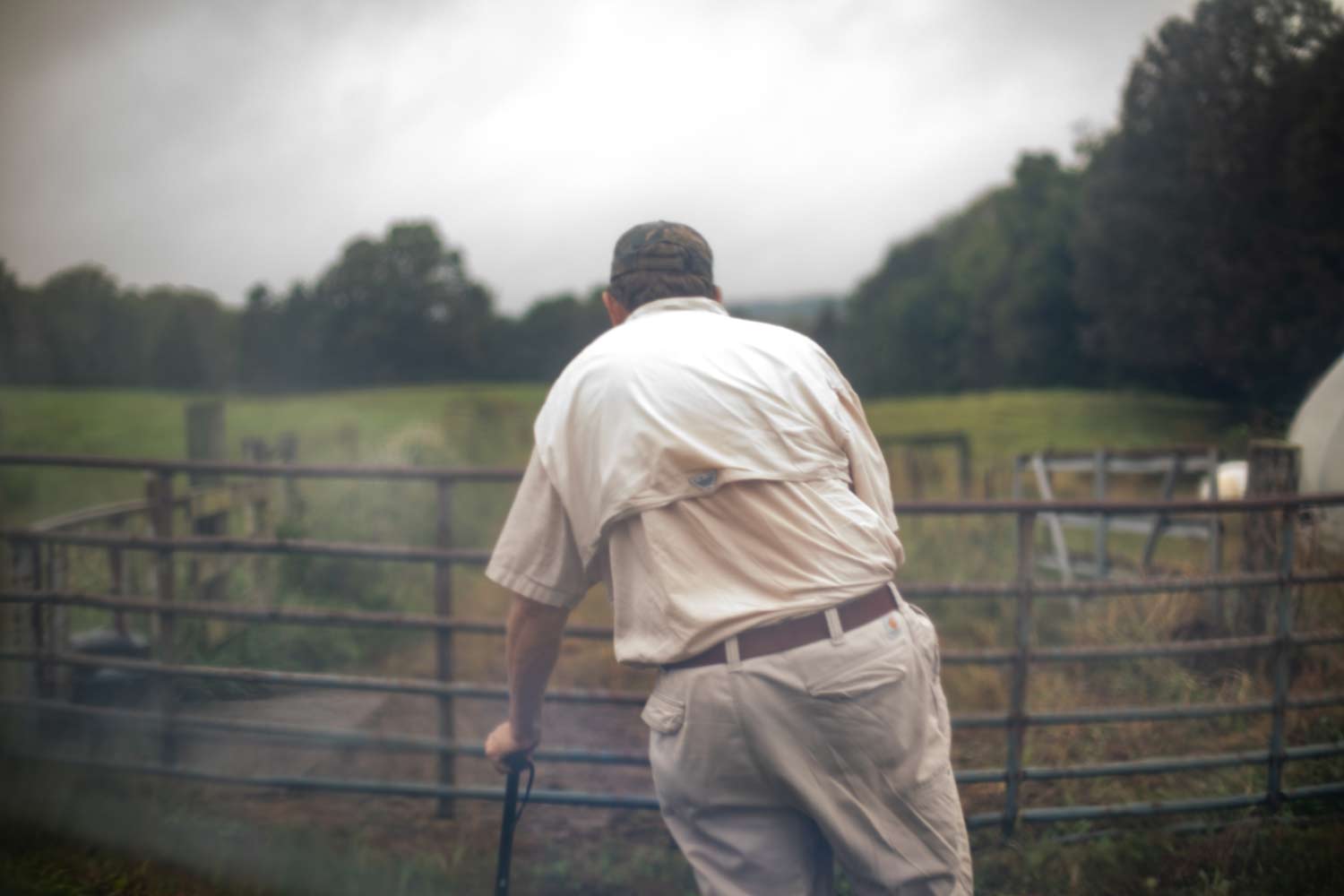
On top of an already tough economic climate, farmers themselves are largely aging, with the average age at 58.3 years old, a figure that rises every census, according to a 30-year trend. The most recent USDA data available shows that over one-third of principal farm operators were at least 65 years old.
It’s an unsustainable recipe: a graying workforce, economic instability, and a labor-intensive profession.
But farmers adapt, partly out of necessity. More importantly, they do it because farming is a labor of love, explained 59-year-old Ron Burleson, a landscape flower and beef farmer from Unionville, Virginia.
“You gotta like what you do. You ain’t gonna get rich,” Burleson said. “You gotta really enjoy it and not mind working hard.”


Burleson and his wife, Susie, would know. Both Virginia Tech College of Agriculture and Life Sciences alumni, they’ve had to work even harder lately, he said. Five years ago, Burleson suffered a stroke that severely limited his mobility.
He’s found ways around it, with the help of technology like his Trackchair, an all-terrain wheelchair that helps him navigate his field and greenhouse. He was even connected directly through a national USDA program called AgrAbility to an engineer who custom designed a lift that allows the 6’5” farmer to safely get in and out of his tractor.
AgrAbility connects farmers in need of assistance with appropriate resources, like physical therapists and university researchers. In Virginia, a National Science Foundation (NSF) grant is funding Partnership for Innovation, a collaborative effort between the AgrAbility Virginia Program, local company TORC Robotics, and Virginia Tech faculty from agriculture and life sciences and engineering.
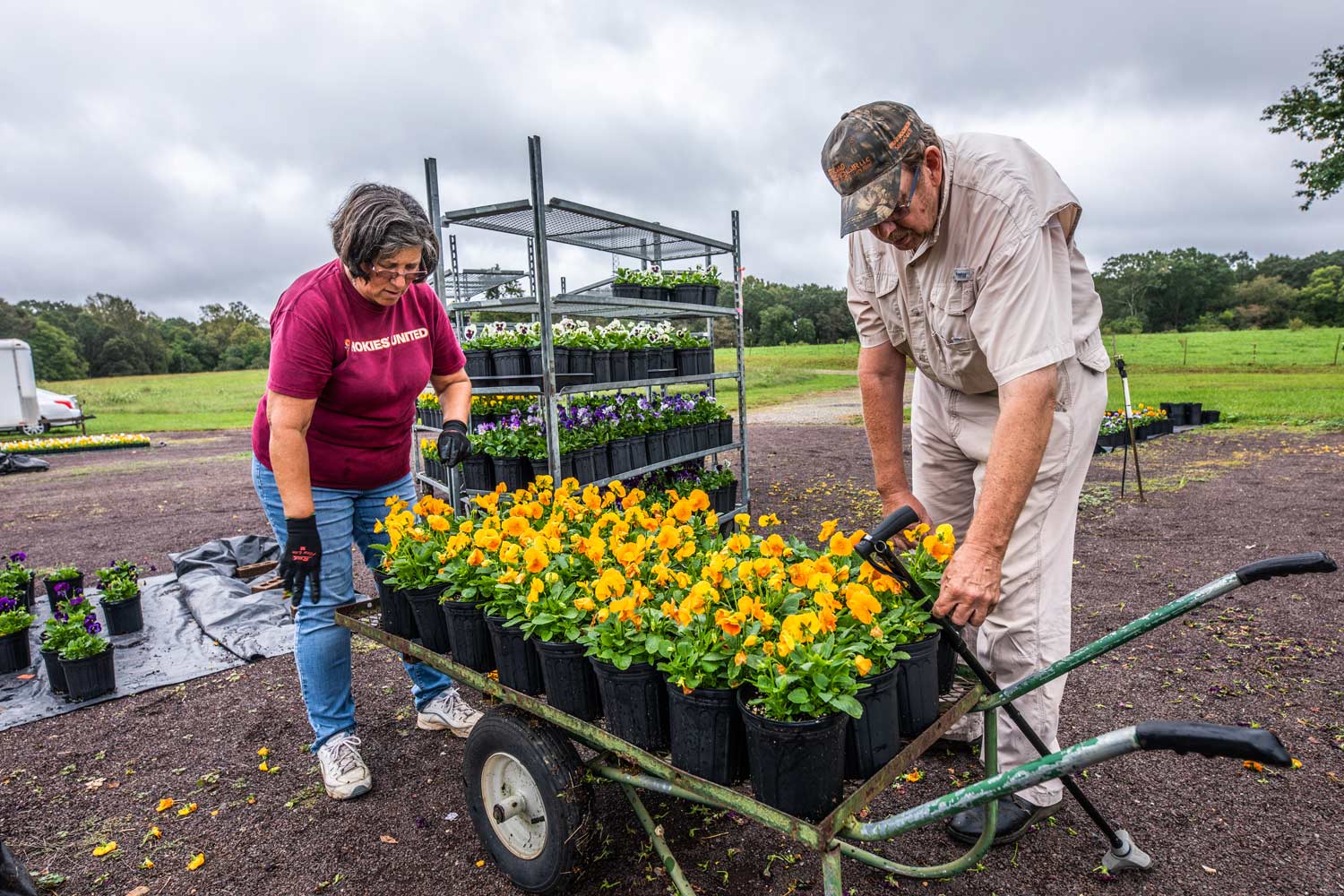
The partnership has one main goal: To design assistive technology for a dozen volunteer farmers with disabilities throughout the state — and to do it across disciplinary lines.
Combining fields, improving yields
Transdisciplinary convergence ultimately results in better products for farmers.
“You can have the technology, but it doesn’t necessarily mean that’s what’s going to be the best solution,” said AgrAbility Virginia program coordinator Kirk Ballin. “Somebody doesn’t necessarily want the latest and the greatest technology. What they want is something that’s going to make their life better.”
Kim Niewolny, AgrAbility Virginia director and a co-principal investigator of the NSF grant, agreed. Among Niewolny’s other scholarship, the associate professor in the Department of Agricultural, Leadership, and Community Education researches the role of participatory and cultural community development for farmworker care and dignity.
“The technology is a possibility. However, it has to integrate into the person's life,” Niewolny said. “To begin, you need to listen to the farmers before you can understand and respond to their needs. Their local context and experience is what counts.”
Researchers from the College of Engineering are finding this to be true as they work on assistive devices for farmers through the grant. When designing a wearable exoskeleton, for example, agriculture faculty and farmers discouraged the engineers from making complex devices with intricate parts. If the exoskeleton required specialized knowledge to maintain, characteristically independent farmers likely wouldn’t bring it to someone else to fix. They just wouldn’t use it.
The researchers took it to heart and approached the design process differently — something that might not have happened if the engineers spent their time siloed in their labs.
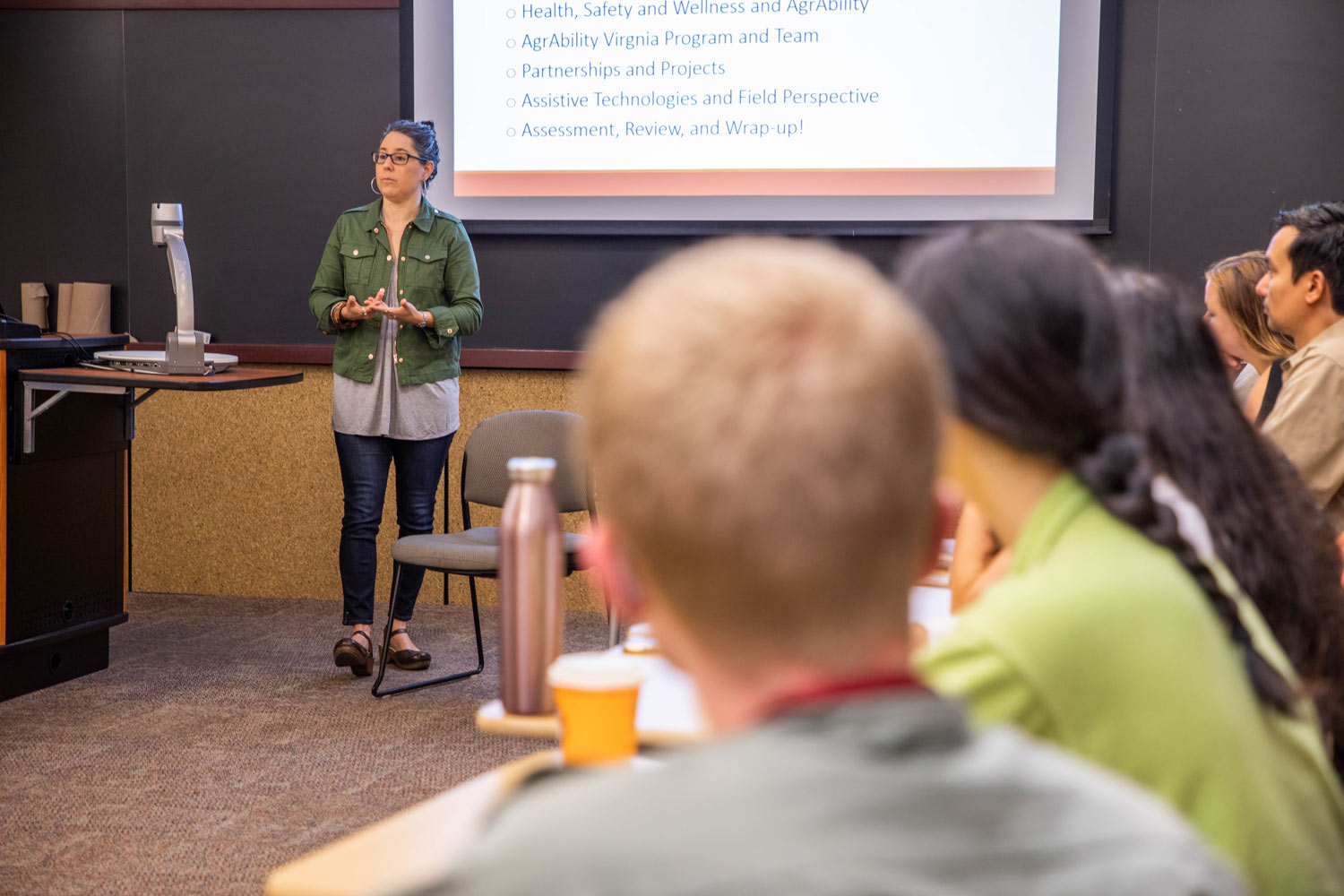

Throughout the next few years under the grant, researchers from the College of Engineering will continue to learn from their agriculture colleagues and volunteer farmers in this style of proactive design.
The hope is to avoid designing high-tech products that farmers don’t actually need or want. It’s not always about revolutionizing the agriculture industry through new gadgets or equipment — a lesson many startup companies could learn from, explained Blaze Currie, a leader within the National FFA Organization, formerly known as Future Farmers of America.
“It's interesting because a lot of them are out of Silicon Valley, and so they have a lot of knowledge about how to make this stuff work. They sometimes, I think, have a distant gap between what's actually valuable to a farmer,” Currie said. “They get to working with farmers then find out that, yeah, farmers might think it's cool, but it's not something that they're willing to pay for because it doesn't actually increase their yields or increase their profit."
Over the remaining two years of the funding, engineering faculty will continually meet with researchers from agriculture, AgrAbility Virginia, TORC Robotics, and the farmers, to improve iterations of custom devices that address each farmer’s unique disabilities and needs.
Mechanical engineering professor Alex Leonessa provides an overview of the work he and his students do in the Wendy and Norris E. Mitchell Robotics Lab in Goodwin Hall. (Video by Jack Beach)
This includes the lightweight exosuit, which aims to lighten the pressure on farmers’ backs and knees, led by mechanical engineering assistant professor Alan Asbeck. Mechanical engineering professor Alex Leonessa is simultaneously designing a robotic glove that could assist farmers like Webb who have trouble gripping objects or who have arthritis.
These devices, explains Leonessa, are intended to keep today’s farmers doing what they love, but at less cost to their bodies, which have already likely endured decades of backbreaking work. Ultimately, the findings from the collaborative effort also provide preventative measures for future farmers.
“Some people argue, ‘Well, what are you trying to do, to get farmers to work until they’re 90? The average age is already 65, now you’re giving them all of this technology so that they can work even when they cannot really move,’” Leonessa said. “And that’s really not the intention. The intention is to make sure that they — using this technology from an earlier age — can age gracefully so that when they are 65, they don’t have all of these problems.”
Industrial and systems engineering assistant professor Divya Srinivasan, a human factors expert whose lab focuses on ensuring technology is human-friendly, is leading research efforts to ensure the devices the group builds will be beneficial, and not harmful, to the wearers.
“There’s a trend for technology to get designed by technologists,” Srinivasan said. “We’re trying to reverse that trend by saying we need the human piece right at the design stage.”
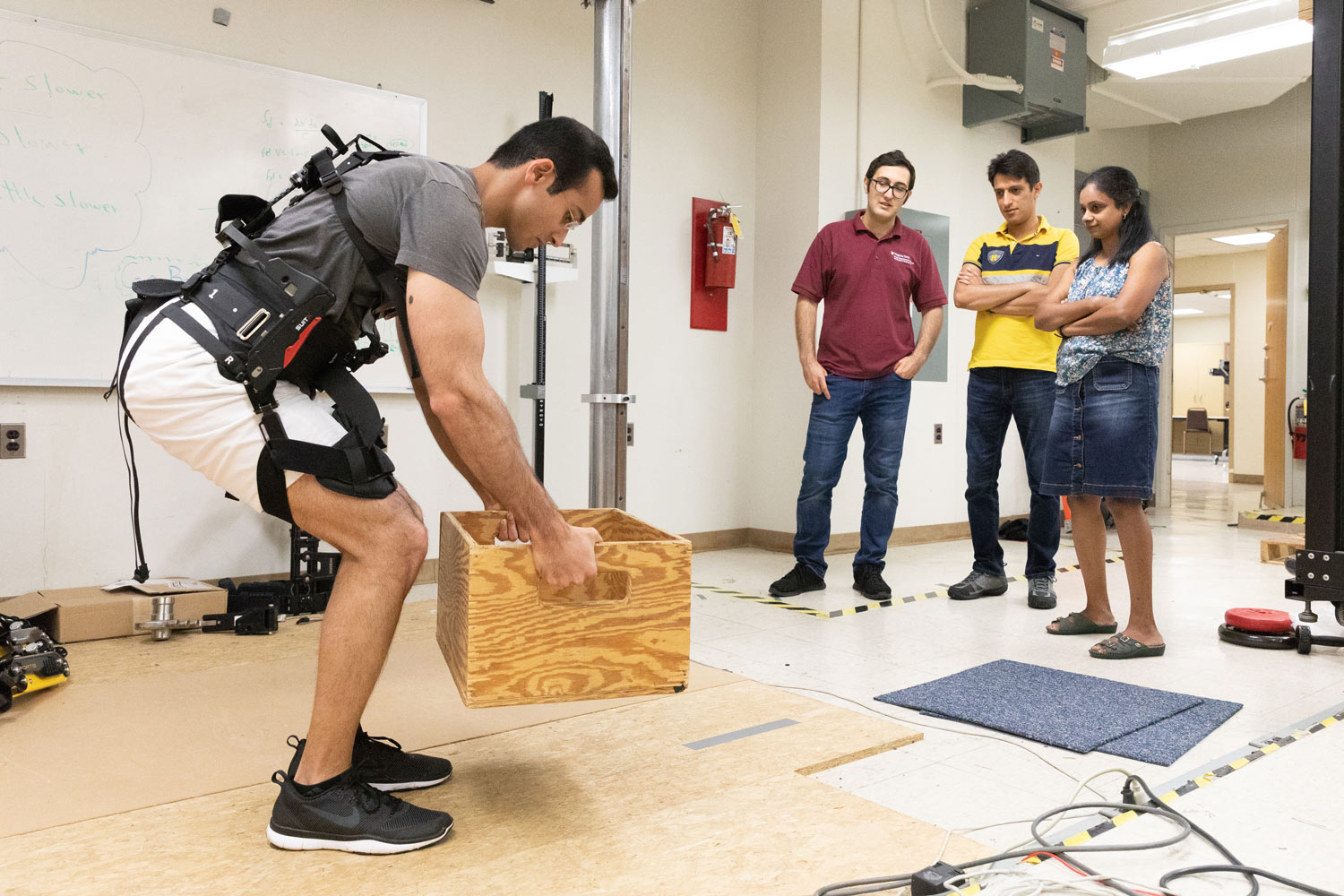
Srinivasan is also leading an international research coordination network, based out of Virginia Tech and funded by the National Science Foundation, called Helping Agriculture Remain Vital Through Engineering, Science, and Technology — or HARVEST, for short.
Satyajit Upasani, a Ph.D. student researching human factors, serves as a test subject performing routine tasks in the same vein as industrial workers in order to study the effects of assistive devices. (Video by Erica Corder)
Through the network, experts in engineering and agriculture and farmers from the U.S., Australia, Ireland, and Canada are evaluating risks and benefits of emerging technologies, particularly as it pertains to small and midsize farms.
The network might not have to turn too far to find these new technologies: many of them are being developed right at Virginia Tech.
Inventing tomorrow’s farms
In labs across Virginia Tech, researchers are building on a rich history of agriculture and engineering dating back to 1920, when the university became the first east of the Mississippi to provide an agricultural engineering curriculum.
In mechanical engineering professor Tomonari Furukawa's lab, students run a ground vehicle into an artificial vineyard that serves as a test site for the robot, which aims to assist in the harvesting of table grapes. (Video by Erica Corder)
The agBOT aims to help harvest watermelon. (Video by J. Scott Parker)
Leonessa divides the work engineers do in agriculture into at least two major categories: precision technology and assistive technology.
Precision technology, he explains, is about robotic systems that autonomously tackle monotonous or physically demanding tasks, taking the farmer out of the loop. The end goal is that, at the push of a button, robots can do arduous agricultural tasks.
It’s the concept behind robots built by agBOT, a student team Leonessa advises, that won first place in a national agricultural competition held earlier this year. Responding to the back-breaking task of watermelon harvesting, the agBOT team designed an autonomous harvester that rolls through a watermelon patch identifying melons, picking them up, slapping them to tell if they’re ripe, then harvesting them.

The same concept extends to the work of Pratap Tokekar, an electrical and computer engineering assistant professor. Tokekar, an expert in the difficult realm of collaborative autonomous vehicles, is building a combination drone and ground vehicle system that can monitor and help control the height of vegetation — crucial for plant and soil health.
The drone scours the field, collecting data on plant height using on-board cameras, before needing to land to recharge its battery on the ground vehicle through contact-based charging.
Assistive technology, on the other hand, is about enabling the farmer to do the work themselves. It’s exactly the type of work Leonessa and Asbeck are doing in their labs, through the Partnerships for Innovation grant.
“We are not designing robotic systems to do the job of the farmers,” Leonessa explained. “What we are trying to do is make the job easier for the farmers.”
Then there’s the tech that meets in the middle: both autonomous and assistive. Not taking the human out of the loop, but augmenting human capabilities.
Mechanical engineering professor Tomonari Furukawa is building an autonomous grape-harvester that can delicately pick table grapes — a task difficult in research sponsor Mahindra’s home location of India. These grapes are so delicate, explains Furukawa, they must be individually wrapped in paper to prevent overexposure to the sun.
Researchers in the lab of mechanical engineering professor Tomonari Furukawa are building an autonomous grape-harvesting robot. (Video by Erica Corder)
Complementing this problem, the grapes’ ripeness is difficult to discern for the human eye. Using cameras and computer vision algorithms, Furukawa’s robot can spot when grapes are ripe, and human pickers can direct the robot to harvest.
Fellow mechanical engineering professor Kevin Kochersberger uses drones to identify areas in fields that need extra care, whether due to drought or weeds. Then, a drone pilot can program a route to precisely spray fields with weed remover or pesticides as needed.
The examples continue, and it makes sense, according to Tokekar. The challenge posed by agriculture is a perfect match for engineers seeking to bring helpful technology to the fields.
"Agriculture has always been a very natural partner for robotics research because farms are not completely unstructured, like driving on the roads and so on. But they are not so structured that it's trivial from the robotics point of view,” Tokekar said. "The semistructured nature of these farms gave a good opportunity for people to actually go and deploy robots in the real world."

To get to the real world though, these forward-looking robots and devices built by university researchers must eventually be produced at scale. Only then will this technology be affordable, particularly for small and midsize farms.
“The longer people can work on it and create more efficient ways to build it, then the cheaper those products get, which makes them more accessible to farmers,” Currie said.
How Webb found her joy
Ideally, the work being done at Virginia Tech will not stay at the university. It’s why the Partnership for Innovation sought a company partner, to help take their innovations beyond the scope of the university and allow them to reach the fields as quickly as possible.
It’s how Webb still farms her flowers today. After her blood clot, Webb was connected to AgrAbility Virginia and engineers at Virginia State University.

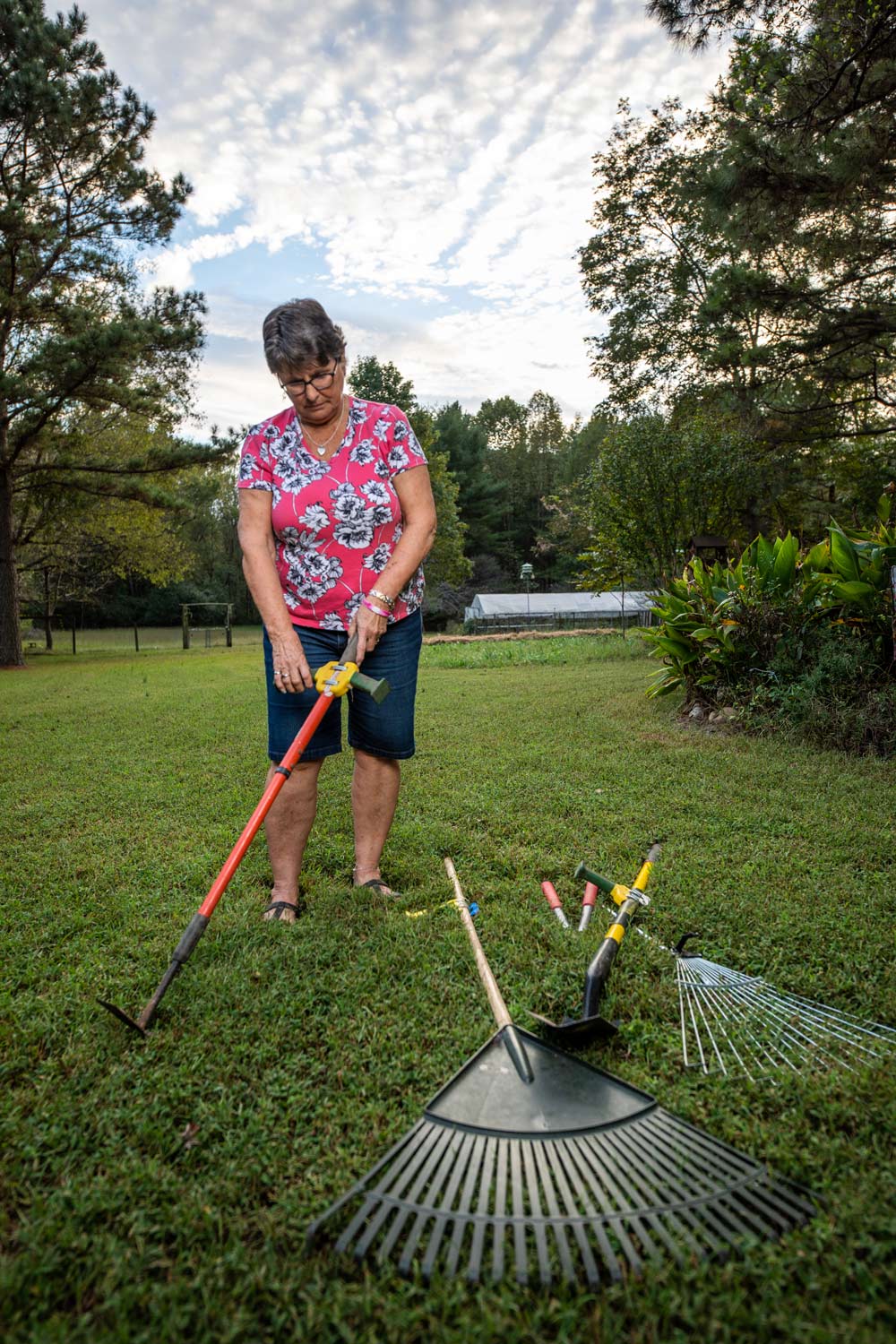
They helped her build unheated greenhouses and modified the tools that she could no longer use. The fix was simple: they extended the handles on her tools so they fit snugly in between her thumb and palm, effectively locking the tools in place.
Fourteen years later, you’ll still find Webb in her flower fields using her modified tools. The only difference you might notice is her switch from annuals to perennials — she says they are a bit easier to maintain.
She doesn’t plan to stop growing them anytime soon.
“You don't get rich on it, but it's just a joy,” Webb said. “You go out in the morning and you pull weeds and everything, and it's just — it's good for the soul.”
If you want to have an impact on our students and faculty like those featured in this magazine, go here to support the College of Engineering. For more information, call (540) 231-3628.
-
Article Item
-
Article Item



